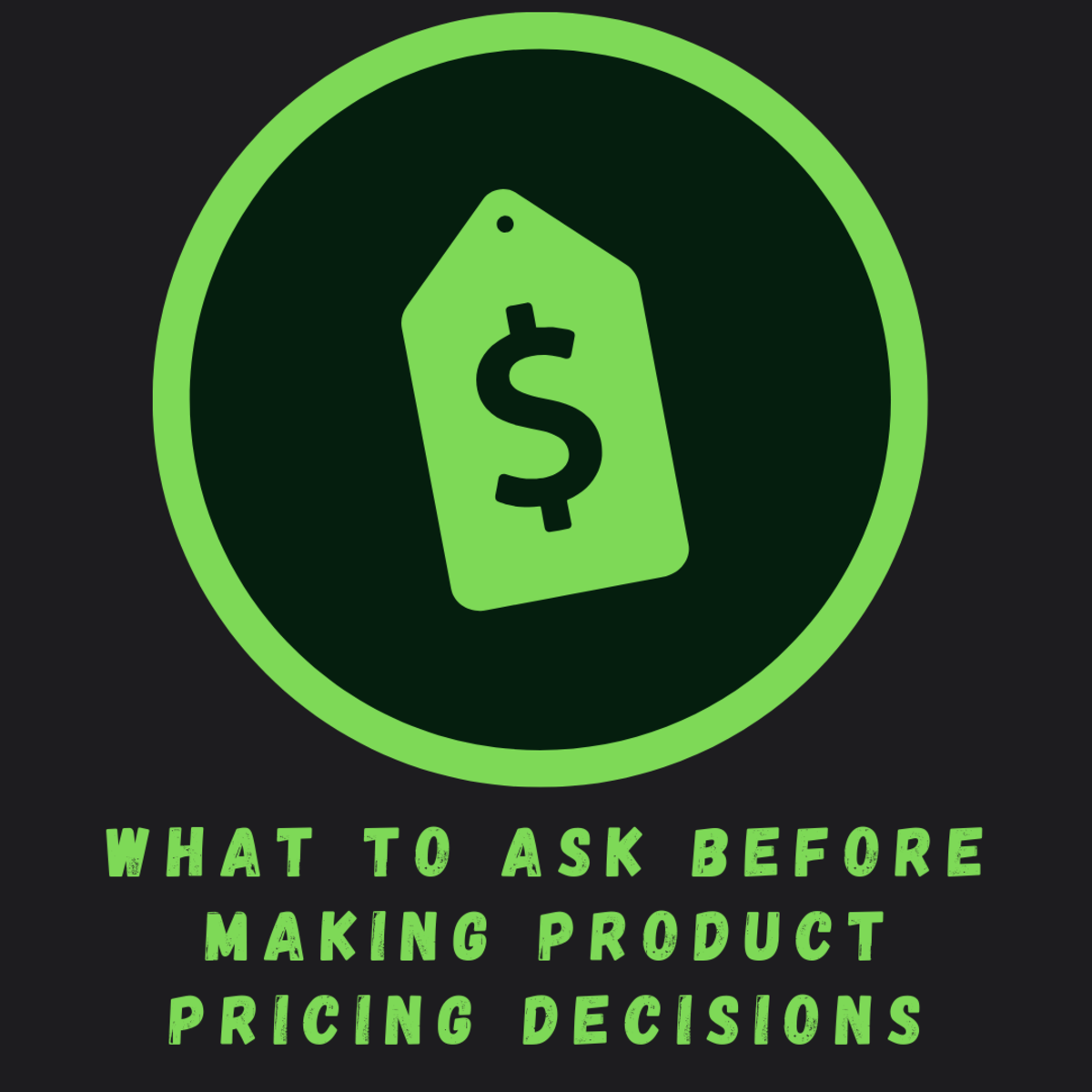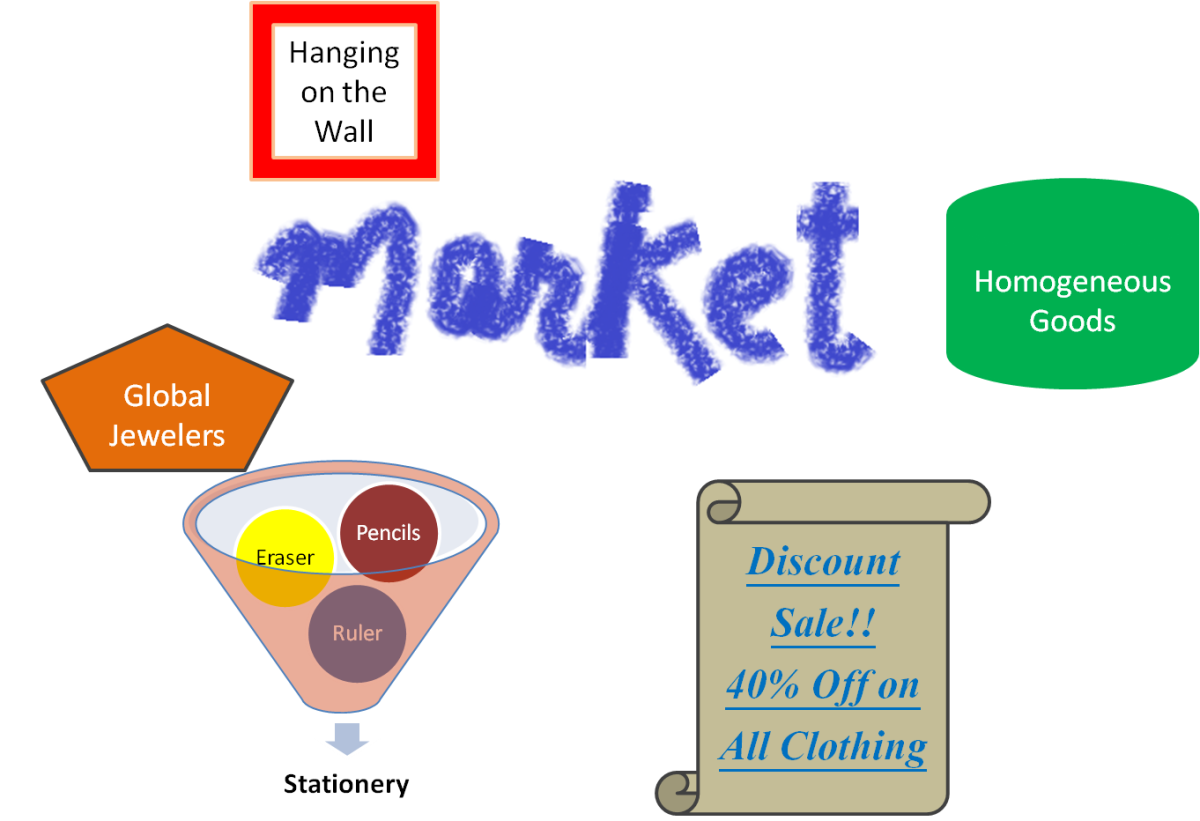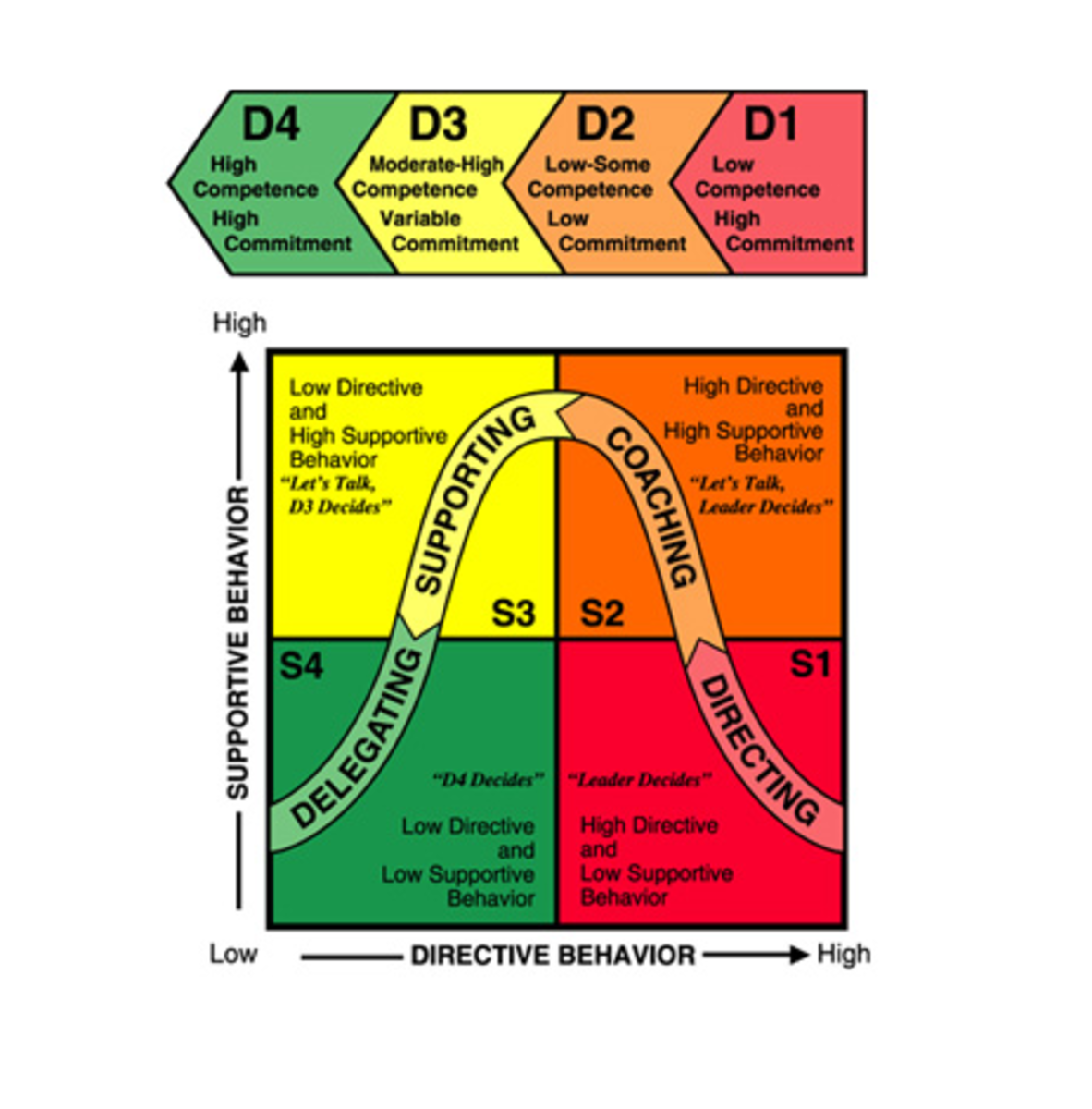Pricing and Price Control.
Introduction.
Price control is an important aspect in any nation's economy. As vital as it is, many countries that may have poor pricing policies will definitely have issues when it comes to incomes, variations in prices and most importantly affordability of goods and services to statesmen. Its important therefore that all nations strive to build an exquisite pricing policy that will not just favor the government as a tax collector but also the producers as well as well consumers of goods and services.
This article explores price and price control issues such as who does it, how and why they do it. Much emphasis is put on price ceiling and its opposite price floor. Read on.
What is Price.
Many business dictionaries will probably give you different definitions to this term but in my best explanation, I see it wise we define price as a momentary amount expected or required for payment of something. Price therefore does not necessarily consider whether goods are exchanged or not and instead will continue to exist whether there has been an exchange or not.
A price is determined by many factors but its primarily affected by market forces. Among the many price determinants are forces of the market in form of demand and supply, agreements between sellers and buyers, government legislations among many others.
The complexity of price issues in an economy leads us to price control so that consumers rights are upheld, sellers rights considered as well and the government as a revenue maker benefits too.
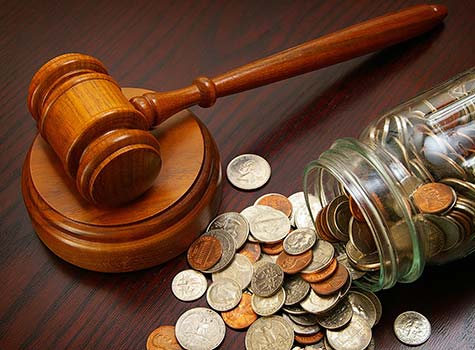
What is price control?
Price control refers to actions of a government of artificially imposing prices of commodities through legislations. Please note that it's not price control when there are no legislations. So why does the government want to artificiality impose prices? Foremost, the government wishes or rather targets to keep prices at a level that can be afforded by all people from different walks if lives. It is the governments primary objective therefore to ensure at least the common civilian can afford basic goods and services at pocket friendly costs. This is something I bet would not have been possible without price control policies in play since private businessmen are out to fulfill their own desires through profit seeking and probably exploiting consumers.
The government may also want to keep incomes of producers at higher levels than that which would be produced by market forces since market forces may tend to go for either of them without maintaining a realistic balance.
Finally, if there is a wide variation in the price of produce, the government wishes to remove them in the interest of both sellers and buyers.
Price Control
Price control, a large concept as early highlighted and one will have so many unclear answers upon vivid meditation. In any country or nation, goods and services are sold and bought by diverse sellers and buyers. I don't want so much to look at the production side but insted focus and explore much on selling hence pricing and price control issues such as who does it, how and why they do it.
Price Control Mechanism By The Government.
The government normally sets a price which either has to be maximum or minimum. The action of fixing a maximum price is theoretically referred to as price ceiling meaning that no seller has has to exceed this price limit otherwise they will be violating government policies. While price ceiling if imposition of a maximum price, the opposite of this is price floor where a minimum price is imposed. Let us now separately look at each of the two mechanism in details.
Price Ceiling.
As earlier mentioned, price ceiling refers to the action by the government to set a price above which no commodities are to be sold. Before I get further in my explanation, I would wish to bring to your knowledge the concept of price equilibrium that will make us have a better understanding of both price ceiling and price floor. In simple words, price equilibrium is that point where a demand curve intersects with a supply curve. This intersection point is what gives us the market price determined by demand and supply forces.
In many cases this price is normally too high therefore the government seeks to regulate it by obviously setting another price below the equilibrium. It can then be concluded then that a price ceiling is normally below the equilibrium price.
Come to think of it, why should a maximum price always be below the equilibrium price? Furthermore, what are the effects of having the maximum price below an equilibrium price?
Under normal circumstances, we expect people to demand more. That is true according to the law of demand. In this case now, price can't exceed the equilibrium point therefore supply will reduce since few sellers will want to sell at low prices. This eventually leads to high demand and ultimately shortage of goods and services in question. The photo below gives a figurative explanation of this.
What follows more is that sellers of commodities concerned will have no choice but to operate on first come first serve basis since commodities are few yet many consumers are demanding them.
In the long run, some producers or sellers will chose to exit the market because they feel like making loses as buyers are demanding more of what they probably don't and cannot provide due to supply shortages.
Price Ceiling Illustration.
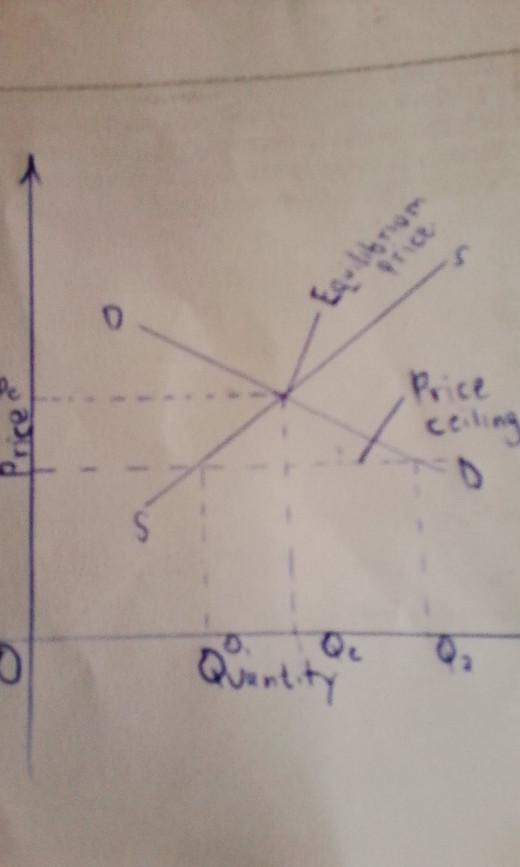
Price Floor
Refers to minimum price imposition. An action by the government to set a price below which no commodity is to be sold.
Minimum prices are normally imposed above the equilibrium price since the government fears the price determined by demand and supply forces is too low.
The normal effect is that supply will project while demand will fall. What follows later is that some sellers and producers will be willing to dispose their products below the legal price as there is low demand. The photo below gives a figurative illustration again.
Price Floor Illustration.
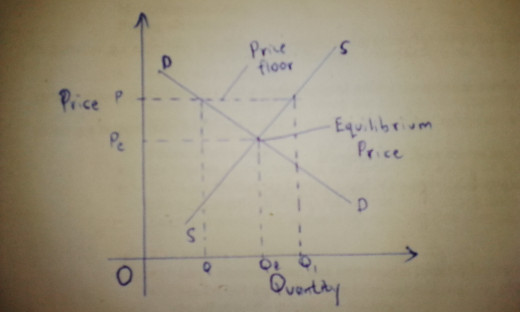
Which is the best price control by the government?
What are some of the pros and con's of price control mechanism by the government?
Advantages
I argue that price control really contributes to industrial peace. How? Price contributes to part of comprehensive income policy together with imposition of maximum price control on the basic necessities. With a healthy price control measure, there will if not non then less of industrial unrests in the form of strikes or protests.
Price control measures can be used as one of the many counter inflatory measures to combat negative effects of inflation. Take demand pull inflation for instance. When many are willing to buy yet prices are high and few money, statutory price policies can significantly contribute to combat the negative effects.
Disadvantages.
Maximum price control gives rise to shortages leading to rise of a black market. A black market us where commodities are sold above the legal price. The price in this kind of market is oftenly the equilibrium price
Maximum price may also force producers or firms which are not efficient to stop production implying increased unemployment and wastage of resources employed in such firms.
All in all, no matter the price control mechanism a government uses, its clear and prime objective is to to see a sound economy in terms of demand and supply of goods and services.
Met something new, which you never knew? Now you know and maybe much more. Feel free to comment and ask any questions for clarification. Thank you.


